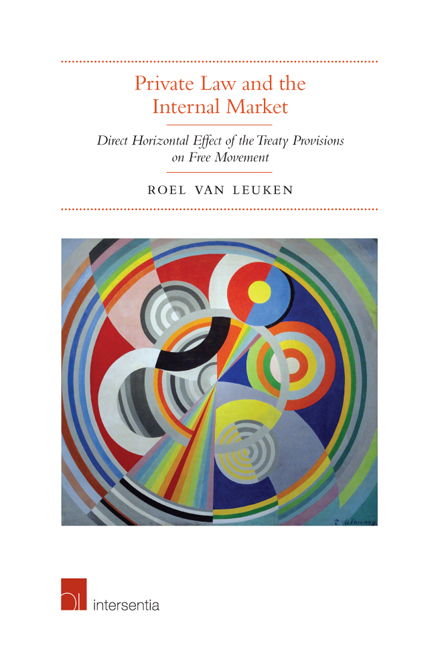 Private Law and the Internal Market
Private Law and the Internal Market Book contents
- Frontmatter
- Preface
- Contents
- Table of Cases
- List of Abbreviations
- Chapter 1 Introduction
- Part I Direct Horizontal Effect: Concept and Application in Competition Law
- Part II Direct Horizontal Effect: Internal Market
- Part III Justifications
- Chapter 8 The System of Written and Unwritten Justifications
- Chapter 9 Justifications in Private Law Relationships
- Chapter 10 Summary and Conclusions
- Bibliography
- Index
Chapter 10 - Summary and Conclusions
from Part III - Justifications
Published online by Cambridge University Press: 27 September 2018
- Frontmatter
- Preface
- Contents
- Table of Cases
- List of Abbreviations
- Chapter 1 Introduction
- Part I Direct Horizontal Effect: Concept and Application in Competition Law
- Part II Direct Horizontal Effect: Internal Market
- Part III Justifications
- Chapter 8 The System of Written and Unwritten Justifications
- Chapter 9 Justifications in Private Law Relationships
- Chapter 10 Summary and Conclusions
- Bibliography
- Index
Summary
INTRODUCTION
The European Union is pursuing the creation of an internal market, ie an area without internal frontiers in which the free movement of goods, persons, services and capital is ensured. In order to achieve this goal, the Treaty on the Functioning of the European Union (TFEU) contains a number of fundamental prohibitions that were originally assumed to be binding only on the Member States (ie public bodies and private establishments whose structure or business are publicly controlled): Articles 34 and 35 TFEU (free movement of goods), Article 45 TFEU (free movement of workers), Article 49 TFEU (freedom of establishment), Article 56 TFEU (freedom to provide and receive services), and Article 63 TFEU (free movement of capital). All these provisions are capable of producing so-called direct vertical effect: by conferring enforceable rights on individuals against the Member States, they can directly influence the substance of ‘vertical’ legal relationships (ie legal relationships between individuals and public authorities). The classic example is that of an individual who, in legal proceedings against a Member State, takes the position that a rule of law laid down by this state is contrary to one of the Treaty provisions on free movement and must therefore, by virtue of the principle of primacy of European law, be disapplied.
Notwithstanding the above, it follows from the case law of the Court of Justice that at least some of the Treaty provisions on free movement also apply directly to ‘horizontal’ legal relationships, in the sense that they result in the creation, modification or extinguishing of rights and obligations between individuals (direct horizontal effect). Impelled by the incompleteness of and the inconsistencies in the existing case law on the matter, I have searched for the links between the different rulings of the Court, and examined whether its approach to one fundamental freedom can be predictive for other free movement provisions and if so, to what extent. Picturing the possible reach of the influence of free movement provisions on private law relationships allowed me to formulate a private law response aimed at establishing the following propositions:
(i) that private law becomes integrated into free movement law by adjusting to the latter's aims and principles;
(ii) that arguments related to private law should form part of the process of development, refinement, and sophistication of free movement law;
- Type
- Chapter
- Information
- Private Law and the Internal MarketDirect Horizontal Effect of the Treaty Provisions on Free Movement, pp. 185 - 196Publisher: IntersentiaPrint publication year: 2017


